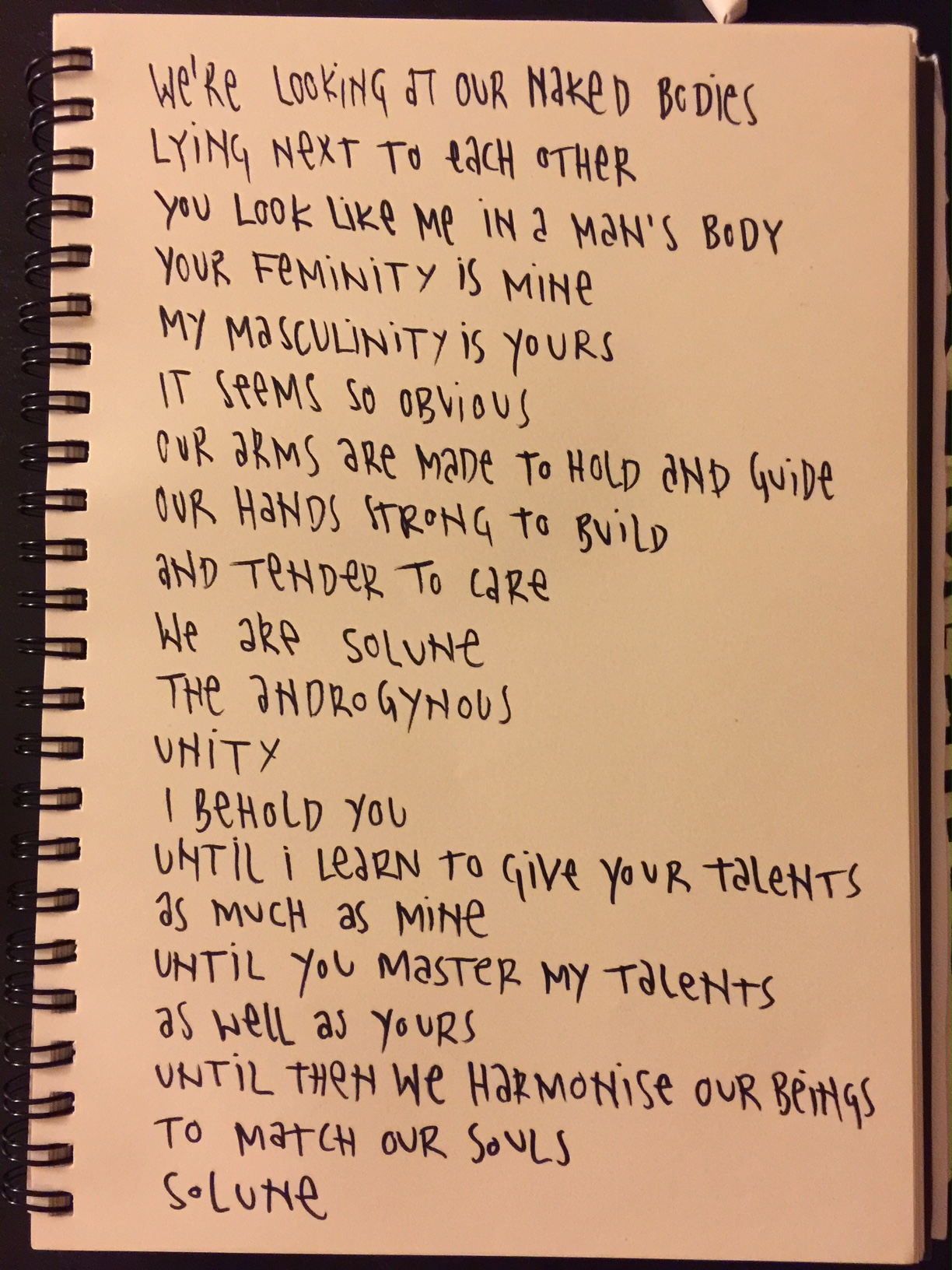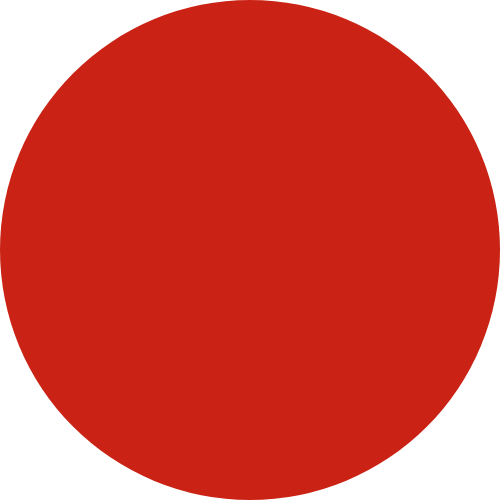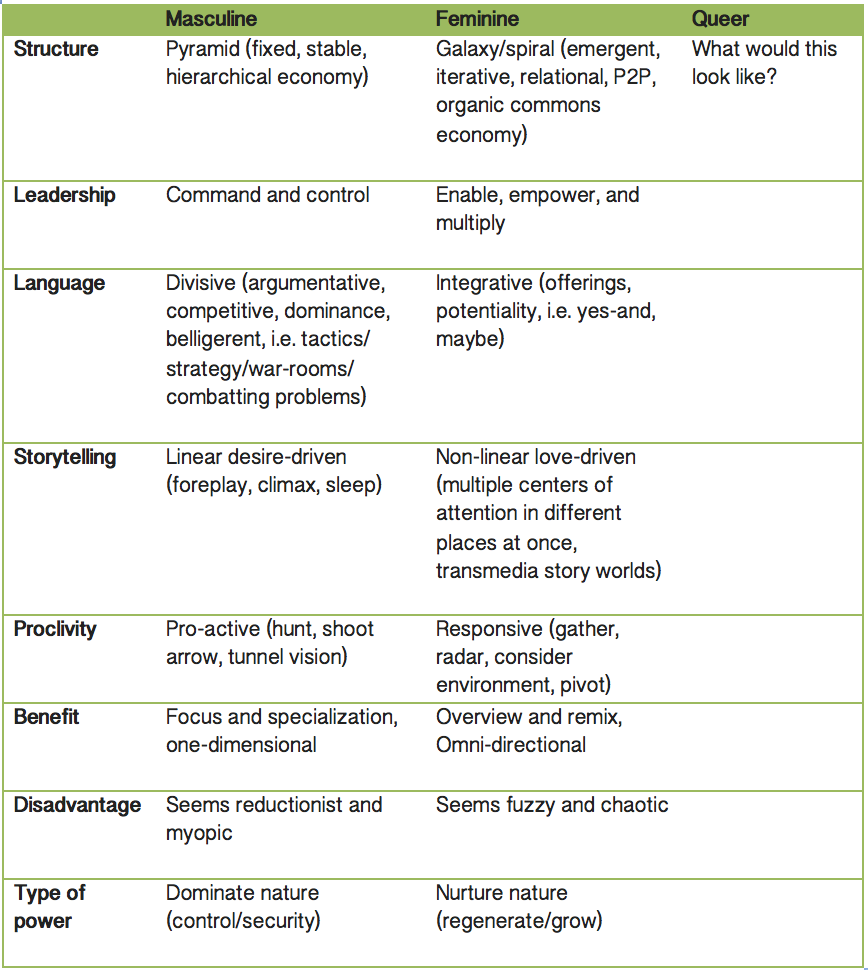I’m feeling torn about this article. Although I posted it on Medium I never shared it really. I rewrote “fem” and “masc” to read “yin” and “yang”, but that doesn’t cut it either. There’s something in it, and it needs other people, conversation, to shape what can become, so I release it:
This is the story of a change of mind that came so sudden that I didn’t even had time to get nervous. It was the day I shared the stage with Yochai Benkler, which means I had a mad good audience. The OUIshareFest committee had asked me to talk about Poietic Co-Entrepreneurship, something I had R&D’ed for years. But just before the talk, I spontaneously decided to share something else instead, and said:
“This talk is about Androgyny, or the in-between, and how that relates to the way we work, talk and play.”
I handed out small tags and asked everyone in the audience to write down how they saw themselves on a scale between masculine and feminine. Say, I feel 70% feminine and 30% masculine. Then I asked them to flip that and listen to the talk from that perspective. Dear reader, you might want to do the same.
After we had gender-labelled ourselves sufficiently, I went on. Let’s assume we live in a patriarchal economy. That means that structures, symbolism, language as well as storytelling and sense-making mechanisms are largely masculine. There’s an emphasis on competition, argumentative communication, and a desire for definition, linearity, and focus.
At this point, I could hear shuffling feet in the audience and noticed intensive stares, but no one left.
STRUCTURE
To reveal patriarchal structures, I spoke about pyramids versus galaxies as symbols for the old and new economy. The pyramid is the old economy, a hierarchical system with a desire for security/control, winning, and stability. You set an aim, shoot the arrow and go for the kill. The galaxy is the new economy, and is made of many moving parts, which continuously change their relationship towards one another. Here, control is surrendered to organic movement. Stability is found in resilience: the ability to respond well to whatever curveball your environment serves you.
Emerging ways of working emphasise such traits. They are relational and integrative, not exclusive or competitive. Take commons-oriented peer production or design thinking, where pivoting and iterating are characterised by non-linear flows that embrace and integrate multiple potentialities.
LANGUAGE
By this stage, I felt heightened energy in the room and saw supportive nods. I went on pointing out that — while we’re religiously preaching design thinking — the method itself will not change current winner-takes-all practice unless we change the language that goes with it.
We’re still using war terminology: we talk about strategy and tactics and war rooms and combatting problems. Just to get a foot in the door, we marry design thinking with business speak. Speaking of imagination, joy, and playfulness is still frowned upon. Despite modern rhetoric, failing still has a stigma. Empathetic soft-spokenness is devalued as weak and indecisive. Saying “maybe” is seen as an invitation to be taken advantage of. What a shame! What I hear when I hear “maybe” is an invitation to build on someone’s thought. It’s not about arguing someone’s point. It’s about possibility. It’s about levelling up. Not beating down. And that’s way stronger than arguing a point. It is stronger, because you acknowledge that there is more than your viewpoint; it’s stronger, because you acknowledge that an opposing idea is still as true as yours; it’s stronger, because you can hold paradoxical ideas at once and still make sense; it’s stronger, because it’s non-linear multi-level sense-making. In the age of complexity, we may want to come to see that as an evolutionary advantage.
STORYTELLING
At this point, I had eased into my stream of consciousness. So, this is me with a limb out. I proposed that our storytelling is largely masculine, not just in terms of predominant characters in popular TV and cinema, but in terms of underlying structure. In the world of books and films, the typical linear story follows a three-act masculine orgasm: (1) foreplay, (2) climax, (3) sleep (forgive me, but it’s funny). With new technologies, though, we see non-linear narratives emerging. Stories take place on various platforms, such as film, app, graphic novels, instagram, games etc. Such roving stories have multiple orgasms: several releases in various places at once. I’m sure masculine types enjoy these, too.
WHAT ELSE
This chart wasn’t part of my talk, but I got obsessed:
If the Western world is a stronghold of the masculine, how can we bring in the feminine without compromising the masculine altogether? It’s obvious that we have a liking for domination and “power over”. It’s also obvious that — to save our planet — we need to shift our focus to nurturing and caring qualities; the ones that act from a deep-seated “power within”, a mature strength that leads by service, a confident wanderer that finds that the goal can be in the way.
In our upbringing, we have learned that masculine traits bring success, but we shouldn’t train ourselves to play the domination game. Instead, we should infuse our economy with love and care. Still, we need to realise that these traits bring success, too. And that means valuing and remunerating affective and emotional labour. That means recognizing that the feminine holds a wisdom that will only thrive if we allow the masculine to subside a bit. That doesn’t mean that we don’t need our masculinity. The opposite, we need both. We need the queerness of being both, of being in-between. We could re-marry the masculine and feminine; renew the vows and help both create the poetry of life by working hand in hand, by engaging in love-driven politics with each other, and with nature, by being alchemists.
So I wonder:
- How can we create malleable structures that enable and equally value both feminine and masculine expressions of individual and collective creativity?
- How can we bring about a value system for a new economy that embraces the in-between – including its uncertainty, fuzziness, and tenderness – and fosters queerer and more caring modes of interaction?
In Paris, I ended my talk reading out this poem of mine.


